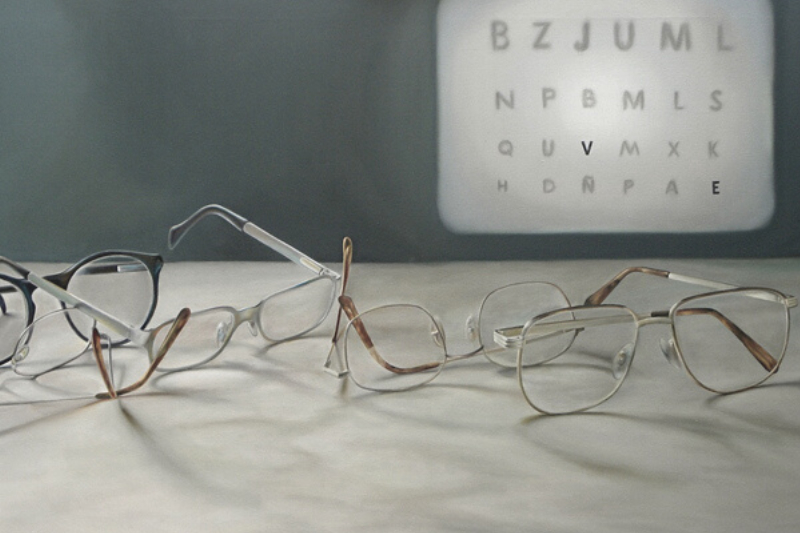
20 Nov Myopia
Myopia – Origin and what to do
Short-sightedness – also known as myopia – now affects over 60 percent of people in industrialized countries. In the major cities of Asia, the proportion is even rising to 90 percent. The trend is rising.
What is short-sightedness?
Shortsightedness is the term used to describe visual impairment, which is associated with the loss of clear vision into the distance and has been known since ancient times. At first you can still see things quite clearly in the immediate vicinity, only the objects at a greater distance appear blurred.
Myopia occurs very often at school age. Wearing a vision aid does not eliminate the cause of nearsightedness, which usually further deteriorates vision. You need stronger lenses to be able to see reasonably well. Over time, glasses are worn constantly – even during activities where they are not needed at all. This promotes further deterioration of vision.
The vision aid should only be used when absolutely necessary. For example, weakly short-sighted people do not need glasses for reading or working at a desk.
How does Myopia develop?
For over 100 years, researchers have been studying the causes of myopia. There are several theories, two of which are intensively discussed:
1. Genetic predisposition
 This most common and widespread theory states that myopia is hereditary.
This most common and widespread theory states that myopia is hereditary.
This theory is refuted by studies of entire Inuit communities. The communities that move from their original lifestyle on the ice to the villages of Alaska have a high rate of mild myopia among their children. Only a few of the parents and none of the grandparents are nearsighted. Thus, short-sightedness is not inherited from generation to generation, at least by the Inuit.
2. Overstraining
Overstrain is mentioned as one of the causes of nearsightedness.
Every day we spend many hours looking into colourful and small devices such as smartphones, tablets or computers.
 Whenever we look at an object at a reading distance, our eyes have to focus on it. So that we can see the text sharply on our smartphone or a book, our eyes change their refractive power down to -3.0 dioptres.
Whenever we look at an object at a reading distance, our eyes have to focus on it. So that we can see the text sharply on our smartphone or a book, our eyes change their refractive power down to -3.0 dioptres.
If you now work for hours on the computer or look at your smartphone for a long time, the eye slowly adapts to it.
This is a law of nature and can best be expressed with the following sentence: The function (what you do, where you look, how long you do something) influences the structure (in this case: your visual system) and therefore your vision and acuity.
In other words, if you are sitting in an uncomfortable position (the function), your back (the structure) will try to adapt to it. Failure to do so will cause back pain.
If your eyes are overstrained or incorrectly strained, your eye will react with adjustment. This can result in nearsightedness.
Frequently, however, this “defect” of the eyes is “corrected” by buying a visual aid – with the result that our vision gets worse and worse over time.
Undercorrection, reduction of eyeglass strength
You can see better with the new glasses, my ass. In the beginning some people get headaches, feel dizzy and have the feeling that their glasses are set too high. What many don’t know: With this assumption they are absolutely right.
If your eyesight deteriorates, you have no choice but to go to an ophthalmologist or optician. Here an objective measurement with an autorefractometer is carried out first. This is an examination method that is, however, designed for contact lens wearers. In addition, the accuracy of the best device is only 80 percent.
Then another device is used, which subjectively tests different lens strengths and determines the highest diopter value for correcting vision. This means that the optician adjusts the eyeglass strength to 100 percent, but this does not necessarily have to correspond to the wearer’s reality.
This is exactly where the problem lies.
Glasses and contact lenses take most of the focusing off our eyes. The eye muscles are less strained and become slack over time. Our eyes adapt to the correction of the visual aid. As a result, they become sluggish and lose more and more of their sight.
Which would be better?
It makes much more sense not to correct the strength of the glasses to 100 percent. This allows the eyes to adapt naturally to different conditions throughout the day.
This does not mean that wearing weaker lenses in itself has a big effect on your vision. However, this measure helps to delay the deterioration of vision.
In the Renaissance it was common for patients to borrow glasses from an ophthalmologist. After three to four days, weaker lenses were used. This was done until the eyes returned to normal vision.
In combination with eye training, weaker lenses can become a visual training instrument. This gives your eyes an additional incentive to improve.
Therefore you should always insist on the minimum value. Especially in view of the fact that your vision can vary by up to two dioptres during the day. Fatigue and stress play an important role. Many people take the test in the afternoon, after work, when their eyesight is deteriorating anyway. This falsifies the result.
There are only a few studies on the effect of undercorrection. Gross’s study showed that the annual progession rate for nearsightedness was halved with undercorrection. This study shows that a simple undercorrection is an effective way to stop the progression of myopia. In conjunction with eye training, myopia is reversible.
Eye tests, measure your dioptres yourself!
With online eye training we show you how you can measure your dioptres with only a few aids.
Hardly anyone has an idea of what dioptre means. Our vision test gives you a definite and comprehensible result. You will be able to put your vision in the distance in direct connection with your diopter strength. This information serves as feedback and helps you to track your progress.
We will also show you how to proceed in a meaningful way with the undercorrection of your diopter strength. You should adjust the correction in the course of your training to your progress.
Eye training for myopia
In vision training, we distinguish between mild and severe nearsightedness and offer various eye exercises:
- Mild or incipient myopia below -2.00 diopters
- greater myopia over -2.0 diopters
- We’ll also show you the best way to relax your eyes.
The recommendation is to perform the exercises several times a day for a few minutes over a different period of time, depending on the diopter strength. During eye training you will learn to determine your diopter strength yourself and to measure your progress.
With eye training you can defeat your short-sightedness and get rid of your glasses or contact lenses.
Vision tests
With online eye training, there are vision tests that you can perform yourself and thus make your training progress measurable. Find out more here: Course.


